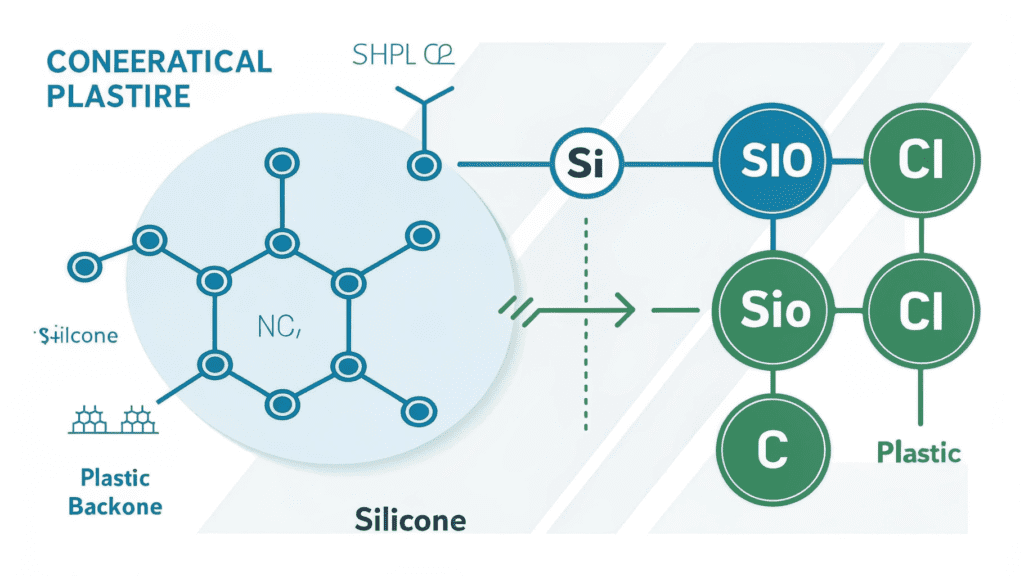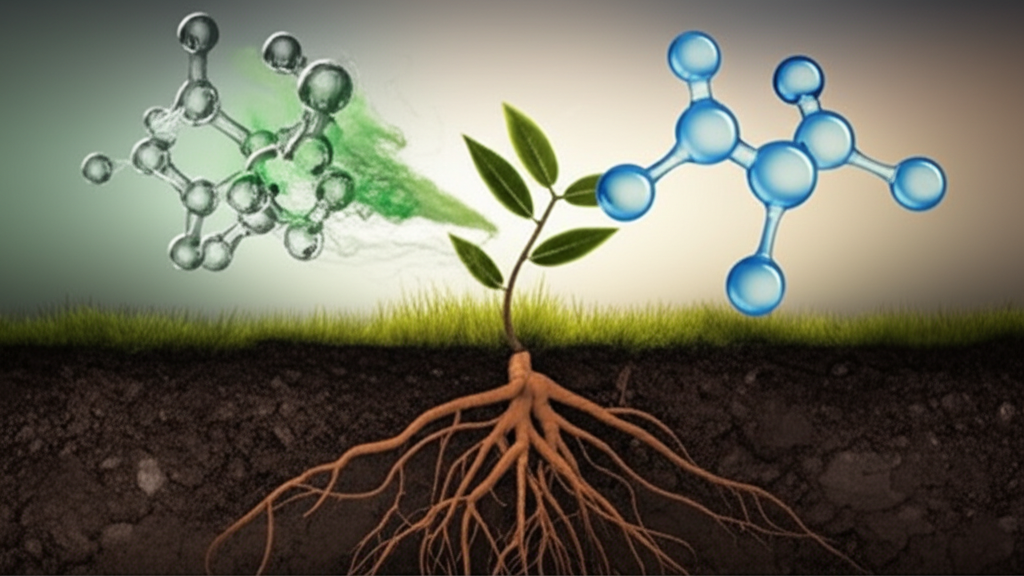
The intensifying scrutiny on material choices—encompassing sustainability, safety, and performance—has become a defining challenge for B2B product development and operational efficiency. Procurement managers, operations directors, sustainability officers, and supply chain executives are no longer asking if materials matter, but how to strategically navigate the intricate landscape of modern polymers. The seemingly straightforward question, “Is silicone better than plastic?”, for example, unravels into a complex matrix of considerations impacting everything from regulatory compliance and product lifecycle costs to brand reputation and market access. Ignoring this material dilemma can lead to significant commercial liabilities, including fines for non-compliance with evolving environmental directives, reputational damage from unsustainable practices, and compromised product performance. This comprehensive guide provides a data-driven framework for strategic material selection, designed to future-proof your supply chain and empower informed innovation in an increasingly transparent and regulated global market.
Understanding Your Materials: A Foundation for Informed Innovation
To truly understand the strategic implications, we must first appreciate the industrial ascent of these ubiquitous polymers. Plastic’s journey began in 1855 with Alexander Parkes’ celluloid, a substitute for ivory, but it was Leo Baekeland’s Bakelite in 1907 that ushered in the era of truly synthetic, mass-produced plastics. World War II then dramatically accelerated production, cementing plastics’ role in diverse sectors from automotive to packaging due to their affordability and versatility. However, this ubiquity now comes with significant environmental and health liabilities.
Silicone’s evolution, on the other hand, stemmed from Swedish chemist Jöns Jackob Berzelius isolating silicon in 1823, with American chemist James Franklin Hyde pioneering its commercialization in the 1930s. By the 1940s, silicone was integral to wartime applications, evolving into high-performance materials for demanding environments like the Apollo 11 mission. Silicone’s specialized niche is defined by exceptional thermal stability, flexibility across wide temperature ranges (-60°C to 300°C), chemical inertness, UV resistance, and general non-toxicity, making it ideal for medical, aerospace, and high-heat industrial applications. Plastics, conversely, offer a diverse range of properties from rigid to flexible, lightweight, and easily moldable, making them highly cost-effective for mass production.
Beyond the Surface: Addressing Performance, Health, and Environmental Impact for Business Success
The choice extends far beyond core properties; it demands a rigorous assessment of performance, health, and environmental impact for sustained business success. For B2B product development, manufacturers must evaluate material resilience against extreme temperatures, mechanical stress, chemical exposure, and UV degradation—crucial for industrial components, medical devices, and high-end consumer goods where failure is not an option.
Navigating global health and safety compliance is paramount. Regulations like the FDA in the US and REACH and various EU directives set stringent standards for chemical leaching. While silicone is generally considered non-toxic, BPA-free, and less reactive, some studies suggest that even high-quality silicones can leach endocrine-disrupting chemicals (EDCs), heavy metals, and phthalates, especially under heat. The EU, for instance, has specific requirements for silicones in food contact, yet observed leaching still prompts caution. Traditional plastics, particularly certain types like PVC, are notorious for leaching estrogen-mimicking chemicals such as BPA and phthalates, linked to various health problems. Even “BPA-free” alternatives like BPS raise similar concerns, urging a re-evaluation of their suitability in sensitive applications. This is why many B2B entities are exploring alternatives, even for seemingly simple items like disposable straws, as detailed in our guide onsustainable straws: sugarcane vs. bamboo for hospitality.

The environmental footprint across the material lifecycle is another critical consideration. Plastic production, heavily reliant on fossil fuels, contributes significantly to resource depletion and greenhouse gas emissions. Its non-biodegradable nature leads to vast accumulation in landfills and oceans, breaking down into harmful microplastics that permeate the food chain. Silicone, while not petroleum-based, requires energy-intensive processes to extract silica and often uses fossil-fuel-derived hydrocarbons in its synthesis. Although it’s less prone to shedding microparticles than some plastics, silicone is also not biodegradable and can persist for centuries if not disposed of properly. The global plastics market was valued at USD 524.48 billion in 2024, projected to grow to USD 754.23 billion by 2032, highlighting the scale of this environmental challenge.
Past controversies further shape current perceptions and necessitate robust risk management. The plastics industry, for example, faced significant criticism in the late 1980s for promoting recycling as a panacea, despite internal doubts about its economic viability—a strategy some critics argue aimed to ward off bans. This “greenwashing” has led to enduring public mistrust. For silicone, the highly publicized silicone breast implant controversy in the 1990s, including a class-action suit against Dow Corning, raised serious long-term health effect concerns, even though the FDA later deemed them safe. These historical incidents underscore the importance of transparent material declarations and rigorous testing in B2B product lines. The shift towards sustainable materials is not merely a trend but a regulatory imperative; for instance, understanding how certain materials likebamboo straws decompose in B2B settingsoffers insights into end-of-life considerations that traditional plastics often fail to meet.
In-Depth Analysis: Leveraging Silicone and Plastic for B2B Strategic Advantage
Leveraging either silicone or plastic for B2B strategic advantage requires an in-depth, nuanced analysis, moving beyond simplistic comparisons to a comprehensive understanding of their total lifecycle value. The evolving market demands that procurement managers and product developers weigh durability against environmental cost, and upfront expense against long-term ROI.
Here’s a strategic comparison to guide your material selection:
| Feature | Silicone (B2B Impact) | Plastic (B2B Impact) | Compliance Risk | ROI Potential |
|---|---|---|---|---|
| Durability & Longevity | Superior long-term performance in harsh environments, reducing replacement costs and warranty claims for industrial/medical components. | Variable, depending on type; some plastics offer high impact resistance, but many degrade faster with UV/heat, leading to shorter product lifecycles. | Lower risk of material failure leading to non-compliance in critical applications (e.g., medical devices). | High for high-value, long-lifecycle products; reduces total cost of ownership (TCO) through extended service life. |
| Temperature Resistance | Stable across extreme ranges (-60°C to 300°C), enabling use in high-heat processes (automotive, electronics, bakeware) without degradation. | Most plastics deform/melt at high temperatures, limiting applications. Specialized high-performance plastics exist but are expensive. | Essential for compliance in food contact or medical sterilization; lower risk of chemical leaching under thermal stress. | Prevents costly product recalls or performance failures in temperature-sensitive applications; enables innovation in demanding sectors. |
| Chemical Stability | Highly inert; ideal for medical implants, laboratory equipment, and food contact, minimizing leaching and reactivity with various substances. | Can leach chemicals (BPA, phthalates, EDCs); reactivity varies by type. Requires careful selection for food, medical, or chemical processing applications. | Lower health & safety compliance risk (e.g., FDA, EU Food Contact Regulations) for sensitive applications, enhancing brand trust. | Reduces legal liabilities and brand damage from chemical exposure concerns; increases market acceptance in health-conscious sectors. |
| Weight-to-Performance | Excellent balance for demanding applications where durability and safety are paramount, even if slightly heavier than some plastics. | Very lightweight, crucial for reducing logistics costs and improving fuel efficiency in automotive/aerospace; can compromise durability for extreme weight savings. | Compliance with specific weight standards in transport or aviation industries; ensures product integrity during handling. | Significant savings on shipping and fuel, especially for large volumes; enhances product usability and reduces handling strain. |
| Manufacturing Flexibility | Versatile for compression, injection, and liquid silicone rubber (LSR) molding; growing capabilities in 3D printing for complex geometries. | Highly adaptable across various molding, extrusion, and thermoforming methods; significant advancements in AI-driven smart manufacturing and 3D printing. | Adherence to manufacturing standards for precision and consistency; managing waste and resource efficiency in production. | Streamlines production, reduces waste, and allows for rapid prototyping and customization, accelerating time-to-market. |
| Total Cost of Ownership | Higher upfront material and tooling costs, but offset by longer lifespan, fewer replacements, and reduced regulatory risks; lower long-term TCO. | Lower upfront cost, but potential for higher TCO due to shorter lifespan, potential health/environmental liabilities, and increasing recycling/disposal costs. | Managing increasing regulatory costs (e.g., EPR schemes) and potential fines for environmental non-compliance. | Optimizes long-term profitability by balancing initial investment with operational savings, risk mitigation, and brand value. |
| Recyclability & Circularity | Recyclable with specialized facilities (often downcycled); limited widespread infrastructure, but take-back programs emerging. | Diverse recyclability (PET, HDPE common); advanced chemical recycling (depolymerization) gaining traction, aiming for infinite recyclability. | Meeting evolving circular economy mandates and extended producer responsibility (EPR) schemes, critical for market access in Europe and North America. | Enhances brand reputation, unlocks new revenue streams from recycled content, and reduces waste disposal costs. |
For instance, companies like ECOlunchbox and GoSili have actively championed silicone as a superior, healthier choice for reusable food containers, citing its durability and freedom from estrogen-mimicking chemicals prevalent in many plastics. This real-world application demonstrates a clear B2B impact: providing safer, longer-lasting products that resonate with increasingly health- and environmentally-conscious consumers, thereby building brand loyalty and market share.

The market outlook for both materials signals a robust, yet transforming, future. The global silicone market, valued at approximately USD 18.43 billion in 2024, is projected to reach USD 29.46 billion by 2034, growing at a CAGR of around 4.8%. This growth is primarily fueled by escalating demand in construction (sealants, adhesives), automotive (especially for EV components like gaskets and seals), electronics (encapsulants), personal care, and healthcare (medical devices). Innovations in liquid silicone rubber (LSR) and fluorosilicone rubber (FSR) are leading to superior durability and chemical compatibility, while bio-based silicone materials and additive manufacturing (3D printing) are reshaping design and production capabilities. The integration of AI and robotics in silicone manufacturing promises increased efficiency and precision, as highlighted by expert Dr. Sarah Johnson, a polymer scientist at MIT, who states, “Silicone is fundamentally different from conventional plastics.” Challenges include volatile raw material prices and energy costs, yet the demand for sustainable, customizable, high-performance solutions presents significant B2B opportunities.
Simultaneously, the plastics market, valued at USD 524.48 billion in 2024, is forecast to reach USD 754.23 billion by 2032, exhibiting a CAGR of 5.1%. Packaging remains a dominant segment, accounting for approximately 41% of the global market share, alongside growing applications in electric vehicles, construction, and healthcare. The industry is undergoing a profound sustainability transformation, driven by consumer demand and stringent regulations across the US and Europe. A major focus is on bioplastics and bio-based polymers, which utilize renewable sources like sugarcane and corn to reduce petroleum reliance and improve biodegradability. Advanced chemical recycling technologies, such as depolymerization, are gaining prominence, offering the potential for infinite recyclability without quality degradation, a key step towards a circular economy. Europe, in particular, is leading the charge with strict single-use plastic bans and Extended Producer Responsibility (EPR) schemes, pushing manufacturers to innovate or face significant penalties, according to data fromPlasticEurope.org. While the industry faces persistent negative public perception and the imperative to decarbonize, these challenges are spurring opportunities for businesses to invest in sustainable polymer innovation and leverage smart manufacturing for enhanced efficiency. For businesses aiming to align with these evolving standards, understanding various eco-friendly material choices, such as the debate betweensugarcane vs. bamboo straws for sustainable hospitality, becomes crucial for responsible procurement.

Looking ahead 5-10 years, the future for both materials will be defined by relentless innovation in sustainable manufacturing. For silicone, this means more widespread bio-based polysiloxane resins and solvent-free formulations, coupled with the development of more accessible, specialized recycling facilities. For plastics, the emphasis will be on scaling truly circular systems through advanced recycling and the widespread adoption of high-performance bioplastics. Both industries will increasingly leverage AI-driven sorting, smart factories, and 3D printing to minimize waste and optimize production. Regulatory frameworks in both the US and EU will likely become even more stringent, with a stronger push for material traceability and demonstrable lifecycle sustainability, making proactive material strategy a non-negotiable for competitive advantage. TheNational Institutes of Health (NIH)continues to fund research into potential long-term health effects of various polymers, further emphasizing the need for robust material selection processes.

Optimizing Your Material Strategy: Making an Informed, Forward-Looking Decision
Optimizing your material strategy transcends simple substitution; it demands a nuanced, application-specific approach guided by total lifecycle assessment, rigorous regulatory alignment, and long-term brand impact. While silicone offers clear advantages in durability, temperature resistance, and reduced chemical leaching for many critical B2B applications, its higher cost and specialized recycling infrastructure must be weighed. Plastics, though often more economical upfront, necessitate significant investment in sustainable formulations and end-of-life solutions to mitigate environmental and reputational risks. For certain ultra-safe or high-performance applications, established alternatives like glass, stainless steel, and ceramics often present the safest and most sustainable choice, particularly for direct food contact or medical tools where zero leaching is paramount. Ultimately, aligning your material choices with corporate values not only reinforces corporate social responsibility but also dramatically enhances brand reputation and creates market differentiation in a sustainability-conscious global economy. ThePlastics Industry Association (Plasticsindustry.org)underscores the industry’s commitment to these transformations, noting significant investments in advanced recycling and sustainable product development across its members.
Empowering Your Next Steps in Sustainable Material Innovation
Empower your enterprise to thrive in the era of sustainable materials by conducting a comprehensive internal material audit. Prioritize strategic research and development into next-generation polymer technologies, bio-based alternatives, and advanced recycling solutions relevant to your core business, fostering innovation that aligns with global sustainability mandates. Cultivate strategic partnerships with leading material scientists, innovative suppliers, and advanced recycling solution providers to accelerate your transition to responsible materials and future-proof your product portfolio. VisitMomio.com’sextensive resources on material science and sustainable manufacturing, or schedule a tailored consultation today to gain bespoke material selection strategies, quantify your potential cost savings and brand value uplift, and secure your market share in the rapidly evolving B2B landscape.
întrebări frecvente
Generally yes. Food-grade silicone is non-toxic, BPA-free, and less likely to leach harmful additives such as phthalates, making it safer for food contact and medical applications compared to many plastics. However, some studies show even high-quality silicones may release trace chemicals under heat. Its production process and non-biodegradability also require consideration from both compliance and sustainability perspectives.
While durable and resistant to microplastic shedding, silicone is not biodegradable and can persist in the environment for centuries. Its production is also energy-intensive, requiring high temperatures for silica extraction and the use of hydrocarbons during synthesis, contributing to its carbon footprint.
The US (FDA) and Europe (REACH, EU Directives) both regulate materials for food contact. Europe generally enforces stricter environmental policies, including widespread single-use plastic bans and Extended Producer Responsibility (EPR) schemes. These frameworks push businesses toward sustainable and circular material strategies more aggressively than in the US.
Silicone is technically recyclable, but only through specialized industrial processes. These facilities are not widely available, and silicone is often downcycled into products like oils or lubricants. Some manufacturers offer take-back programs, but large-scale accessible recycling infrastructure for silicone is still developing.
Plastic generally offers lower upfront production and tooling costs. However, silicone’s superior durability and lifespan often reduce replacement and warranty expenses, resulting in a lower Total Cost of Ownership (TCO). Businesses must also account for regulatory compliance costs, risks of chemical leaching liabilities, and the reputational value of sustainable procurement choices.






